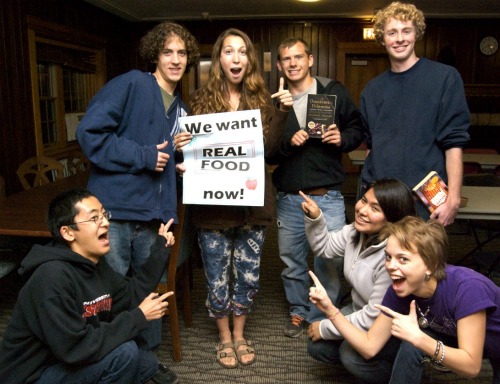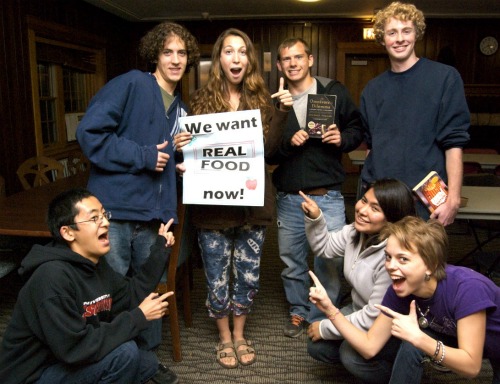Food Studies features the voices of volunteer student bloggers from a variety of different food- and agriculture-related programs at universities around the world. You can explore the full series here.
 Photo: Anna ZeideIf you’ve ever visited the University of Wisconsin, you’ve probably eaten some Babcock ice cream, perhaps while enjoying a sunset on the Terrace. It’s just one of those things that people do.
Photo: Anna ZeideIf you’ve ever visited the University of Wisconsin, you’ve probably eaten some Babcock ice cream, perhaps while enjoying a sunset on the Terrace. It’s just one of those things that people do.
But last week, some of the students in the food ethics class I student-teach began to ask questions about how Babcock ice cream is produced — whether it’s organic, how many processed ingredients it includes, if all the milk is produced locally, whether the cows are happy, and so on. We decided that we’d take some time during our next class session to do a little digging, including finding the contact information of the dairy store or food science administrators who have some say in how Babcock dairy products are made.
This conversation left both my students and me with smiles on our faces. What I found particularly moving was their keen desire to engage and create change at the university level. After my class, I couldn’t stop thinking about the dramatic potential of these sorts of academic-practical connections.
I mean, students have to spend time researching and producing written work anyway, so why not apply that labor toward some practical end — like activism or public history or community education? Of course, not all disciplines lend themselves to these kinds of assignments, but when it comes to food that is produced or served at a University, students are the main audience and funding source, so they hold unusual power.
Students find it very frustrating to learn about large-scale problems — whether it be factory farming or income disparity — and then feel thwarted in their desire to make change because of the enormity of these issues. But while their impact at the national level might not be large, students most certainly can have an impact at the university level. Universities are sometimes more malleable, more flexible, and more responsive to consumer demand than our larger society. The University of Wisconsin’s recent decision to cancel its contract with Nike due to treatment of workers in Honduras, for example, was the result of work by the Student Labor Action Coalition and longstanding activism around labor licensing.
When it comes to food issues, there is building momentum to encourage universities to source food ethically, and to bring “real food” to campuses. One central organizing group, Real Food Challenge, wants universities to offer food that “truly nourishes producers, consumers, communities and the earth … a food system — from seed to plate — that fundamentally respects human dignity and health, animal welfare, social justice and environmental sustainability.”
Real Food Challenge was here in Madison a couple of weeks ago, and put on two workshops for students — one on corporate dining services and one on strategic campaign planning. Both of these sought to give students the tools to approach dining directors and university administrators, aiming to change the way that food is sourced. Of course, there are many bureaucratic and institutional hurdles that stand in the way of change, but a conversation is nearly always the needed first step.
I’ve spoken with chefs and dining service managers here at the University of Wisconsin, and I know that there are many eager, motivated, well-intentioned people in those positions who are looking for students to step up to the plate and call for change. Student demand is valuable to these folks because administrators respond to it far more than to simple good intentions on the part of employees.
But because students are first and foremost at institutions of higher learning to be students, to learn and complete course assignments, it is especially important that we think about ways to gear those learning environments toward creating tangible change. We, as students should ask for assignments that matter. And we, as teachers should see our assignments as opportunities for students to change their lives — and the larger world around them — for the better.




